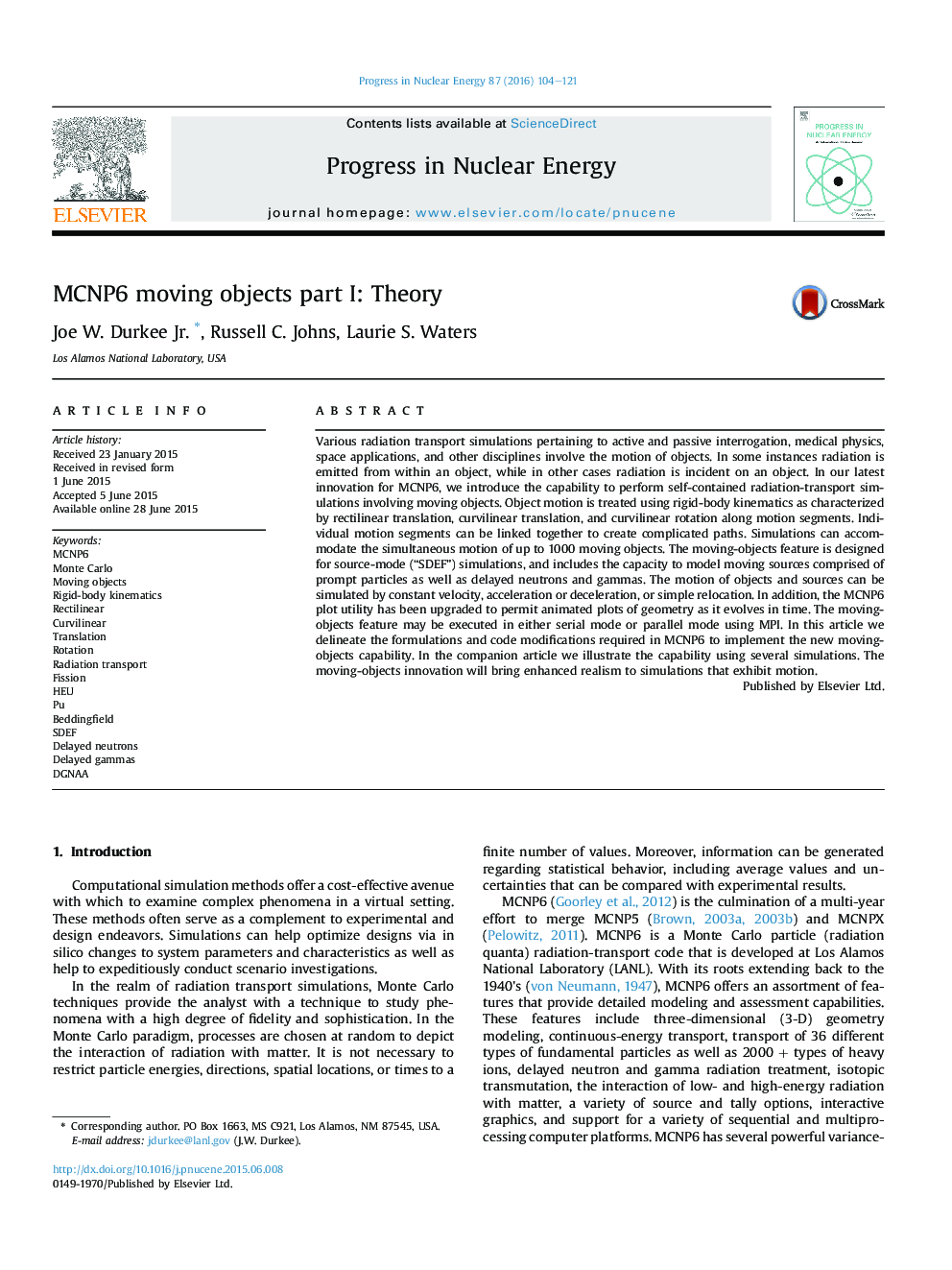| Article ID | Journal | Published Year | Pages | File Type |
|---|---|---|---|---|
| 8085045 | Progress in Nuclear Energy | 2016 | 18 Pages |
Abstract
Various radiation transport simulations pertaining to active and passive interrogation, medical physics, space applications, and other disciplines involve the motion of objects. In some instances radiation is emitted from within an object, while in other cases radiation is incident on an object. In our latest innovation for MCNP6, we introduce the capability to perform self-contained radiation-transport simulations involving moving objects. Object motion is treated using rigid-body kinematics as characterized by rectilinear translation, curvilinear translation, and curvilinear rotation along motion segments. Individual motion segments can be linked together to create complicated paths. Simulations can accommodate the simultaneous motion of up to 1000 moving objects. The moving-objects feature is designed for source-mode (“SDEF”) simulations, and includes the capacity to model moving sources comprised of prompt particles as well as delayed neutrons and gammas. The motion of objects and sources can be simulated by constant velocity, acceleration or deceleration, or simple relocation. In addition, the MCNP6 plot utility has been upgraded to permit animated plots of geometry as it evolves in time. The moving-objects feature may be executed in either serial mode or parallel mode using MPI. In this article we delineate the formulations and code modifications required in MCNP6 to implement the new moving-objects capability. In the companion article we illustrate the capability using several simulations. The moving-objects innovation will bring enhanced realism to simulations that exhibit motion.
Keywords
Related Topics
Physical Sciences and Engineering
Energy
Energy Engineering and Power Technology
Authors
Joe W. Jr., Russell C. Johns, Laurie S. Waters,
